The Memo Every Leader Should Read
And the Work Trend Index Report outlines a Human + Agent future
Last month, I gave a keynote at the ANA AI & Technology Conference in Austin, Texas, sharing insights on the future of AI Agents in Marketing. This followed my keynote at a corporate retreat in New Orleans. From there, I headed to New York, where I spoke to the Americas marketing teams at a Fortune 500 company in Purchase, NY, and joined a keynote panel at the Hispanic Marketing Council Annual Summit where my book was also distributed for attendees. There, I stressed the importance of embracing AI—attempting to marginalize it only risks marginalizing ourselves.
In exciting news, AI Trailblazers unveiled its inaugural AI Trailblazers Power 100 list in partnership with Adweek earlier this month, recognizing those making a significant impact. Stay tuned for exclusive events honoring these leaders, starting with the AI Trailblazers Summer Summit on June 5th in New York. Registration is now open—secure your seat before it fills up.
Adapt or Fade: The AI Expectation Era
Most leaked internal memos damage reputations—they reveal weaknesses, breed distrust, and sometimes end careers. However, the memo from Shopify CEO Tobi Lütke that surfaced two weeks ago is different. It didn’t undermine his credibility; it reinforced it and, arguably, put Corporate America on notice. And, honestly, it shouldn’t be controversial. The real question is: why aren’t more leaders in similar businesses to Shopify saying this out loud?
The memo sets a bold new standard: the reflexive, effective use of AI is now a core expectation at Shopify. Before anyone can request additional headcount, they must first demonstrate why AI cannot perform the task. This isn’t dystopian—it’s leadership that is directionally correct for the AI era. While the message may be difficult for some, it’s increasingly hard to dispute: AI can be significantly more cost-effective and productive for certain tasks, specific functions, and particular types of companies. In a free-market economy, when such options exist, companies have a clear obligation to pursue the most efficient paths to productivity—a responsibility they owe to both shareholders and customers.
Tobi made this crystal clear: this isn’t about dabbling in AI, it’s about mastering it. It’s about moving from experimentation to habitual, embedded usage. It’s about learning how to prompt AI effectively, load the right context, and collaborate with it as an equal partner in creativity and execution. And it’s not optional.
So, how seriously should you take this? In my view: extremely—whether or not your CEO has published a memo. The recent Work Trend Index Annual Report, based on a study of 31,000 workers across 31 countries by Microsoft, reinforces this shift. It’s not just about using AI as a thought partner; it’s about stepping fully into the AI Era, where AI agents will work side by side with human beings as digital labor.
The study outlines the journey to becoming a Frontier Firm, unfolding in three phases: first, AI assists, making existing work faster and easier; second, AI agents become digital colleagues, handling tasks and scaling employee impact; and third, humans oversee agents that manage entire business processes. This evolution mirrors AI’s trajectory in software development and will similarly transform knowledge work. Many organizations will experience all three phases simultaneously.
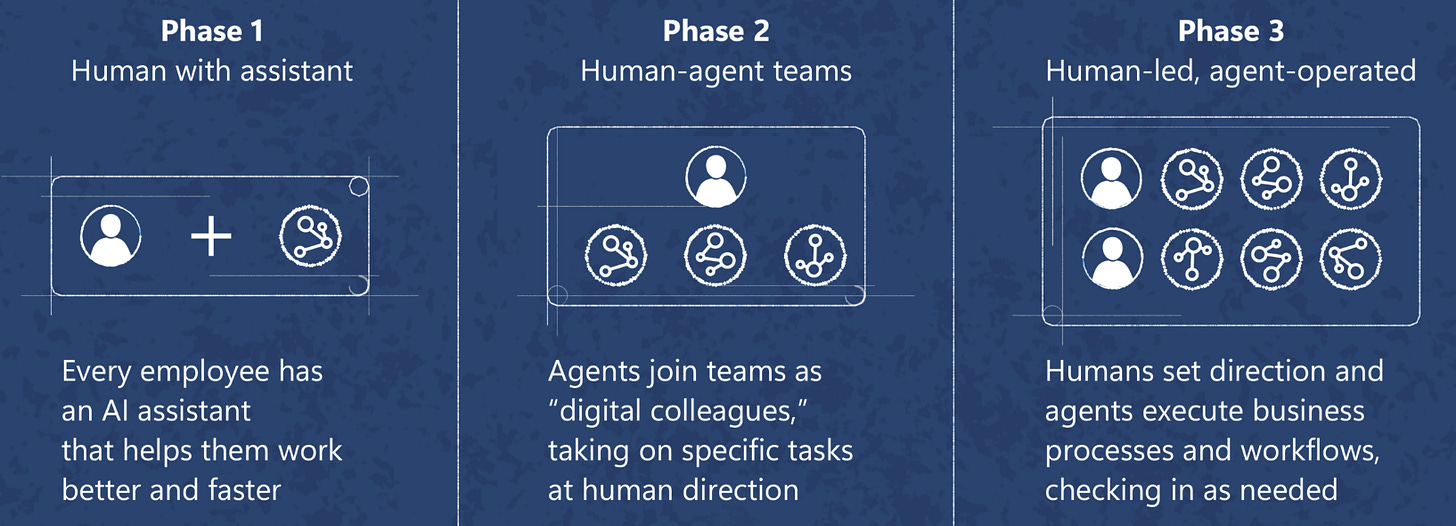
And why shouldn’t you be overly worried about this transformation? According to the study, the demand for intelligence will continue to outpace human supply. AI will make intelligence a durable good: abundant, affordable, and available on demand. With employees already interrupted 275 times a day by emails, meetings, conversations, and other distractions—and with 80% of the global workforce believing they lack the time and energy to do their jobs—we desperately need AI as a force multiplier in the workplace.
Maybe, just maybe, Shopify’s CEO is onto something by aggressively pushing his employees to adopt AI. You can argue that companies will need more human employees and digital labor. But one thing is certain: the nature of the workforce is changing. Whether you’re a marketing leader, team member, or agency partner, here’s what I encourage you to start doing immediately.
Study AI like your career depends on it
Understand not just how AI works, but how it can elevate your craft. In marketing alone, every sub-function—from strategy and insights to content, media buying, and CRM—is being transformed with specific AI tools. I cover this in-depth in my book, but here’s the short version: your competitive edge now lies in how well you can co-create with machines.
Lead your team’s AI journey.
If your team isn’t moving fast enough, here’s your to-do list:
Inspire and educate - bring in experts, host workshops, and normalize the discomfort that comes with learning. If needed, include your agencies and consultancy partners in the conversation. From my own experience leading training sessions, I’ve seen firsthand how teams value leaders who invest in their education. It not only builds appreciation but also drives higher productivity and engagement.
Provide the AI tools - AI tools should be table stakes. Without them, your team is working blindfolded. The right tools can range from large language models like ChatGPT and Microsoft Co-Pilot to specialized platforms like Glean, Runway, Jasper, and Copy.ai. Partner with your technology teams to deploy these tools enterprise-wide, but first, identify the critical use cases.
Prioritize high-impact use cases - find them and pursue them relentlessly. Identifying the right opportunities and addressing them through people, process, and technology frameworks is essential. Some of the most impactful use cases in marketing are covered in my book and earlier newsletters. And here’s a macro list from HBR. But often the best source for discovering high-impact use cases in your business is marrying best practices with insights from your own teams. Start by asking them.
Make it count - Integrate AI skills and usage into performance reviews and promotions. As the memo said: “Only what is measured counts.” This point didn’t receive as much attention, but it’s arguably the most important. Managers should evaluate how employees are using AI to boost productivity and factor it into their assessments. Likewise, employees should be proud and transparent about how they’re leveraging these tools—and eager to share their learnings with others across the organization.
Plan for disruption—not just adapt to it.
Map out how your job, your team, and your entire function might be disrupted in 3 months, 12 months, or 3 years. Engage your agency partners in these exercises and run scenario planning sessions. AI agents are already assisting with insight generation, creative production, media optimization, SEO, and ecommerce operations. If you’re not using them, your competition may be gaining compounding advantages in the meantime. Some processes will evolve, certain agencies will be better positioned for the future, and new skills will be needed—whether through training or external hiring.
Be your own AI investor.
Don’t wait for your company to foot the bill if they’re hesitating. Subscribe to the best tools—ChatGPT, Perplexity, Manus, ElevenLabs, and HeyGen are just a few to consider. I do, and they’ve paid for themselves tenfold in speed, efficiencies, and productivity. You don’t need permission to start leveling up. Most importantly, use these tools extensively. You’ll develop the muscle for when and how to use them effectively—from prompt chaining to context loading—and learn how to harness them for maximum impact.
Invest in your humanity too.
Paradoxically, the more AI accelerates, the more your uniquely human skills matter—critical thinking, relationship building, storytelling, emotional intelligence, and leadership. Keep writing, reading, learning, and refining your edge. Strengthen your company’s brand, design systems, customer understanding, and your leadership, conflict management, and strategic thinking abilities.
Some will read Shopify’s memo as a wake-up call, while others may dismiss it as just another Silicon Valley headline. But I’ve been saying for over a year: AI is underhyped, not overhyped. What Tobi did was codify what many leaders are whispering behind closed doors: if you’re not learning AI, you’re fast falling behind.
So don’t wait. Define the next chapter of your career by leading the way—riding the AI wave with skill, intent, and impact, not trailing behind.
Where I will be
Next week, I will be at Possible in Miami and then after that for board meetings in Baltimore before keynote at the DMS by Luma Summit in May.
Where I’ve been
ADWEEK CEO, Will Lee, recently spoke with Greg Kahn and me about the AI Trailblazers Power 100 list and the inspiring individuals featured. Watch the video and explore the full AI Trailblazers Power 100 list.
And below is a group photograph with some other old friends and thought leaders in the marketing world at the ANA AI & Technology Conference in Austin, Texas.
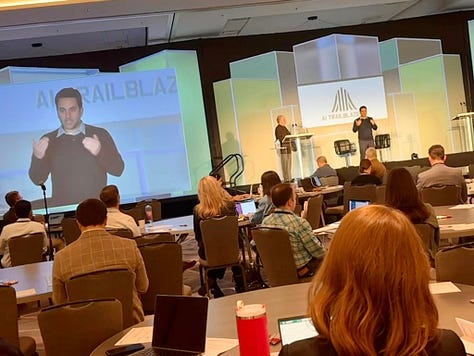
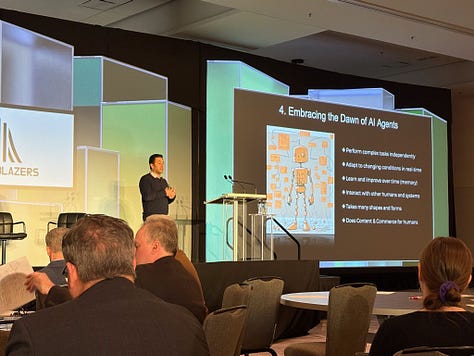
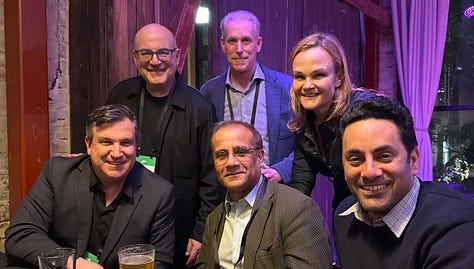
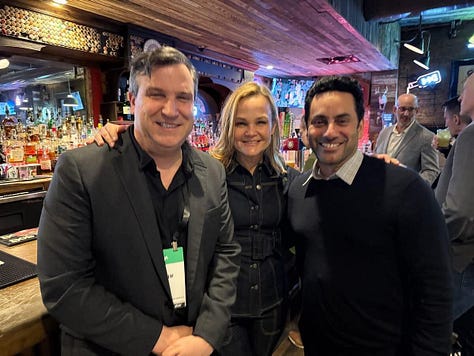
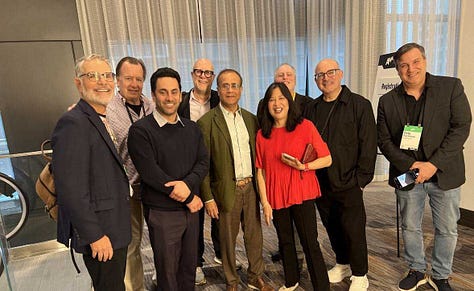
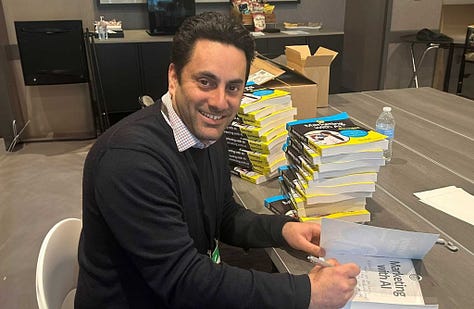
What I’m reading
A New Frontier - Work Trend Index Annual Report (Microsoft)
Adobe Coder Previews AI-Driven Future of Photoshop (PetaPixel)
Columbia Student Suspended Over Cheating Tool Raises $5.3M (TC)
Rogue Customer Support AI Sparks Warning for Automation (Fortune)
Google Search Boss: AI Boosts Click Quality (Search Engine Land)
What I’ve written lately
Business, Rewritten by AI (March 2025)
The AI Dilemma: Smarter or Weaker? (February 2025)
Can the Super Bowl change Search? (February 2025)
AI Tsunami: Are You Falling Behind? (January 2025)
2025 AI Predictions You Can’t Afford to Miss (January 2025)


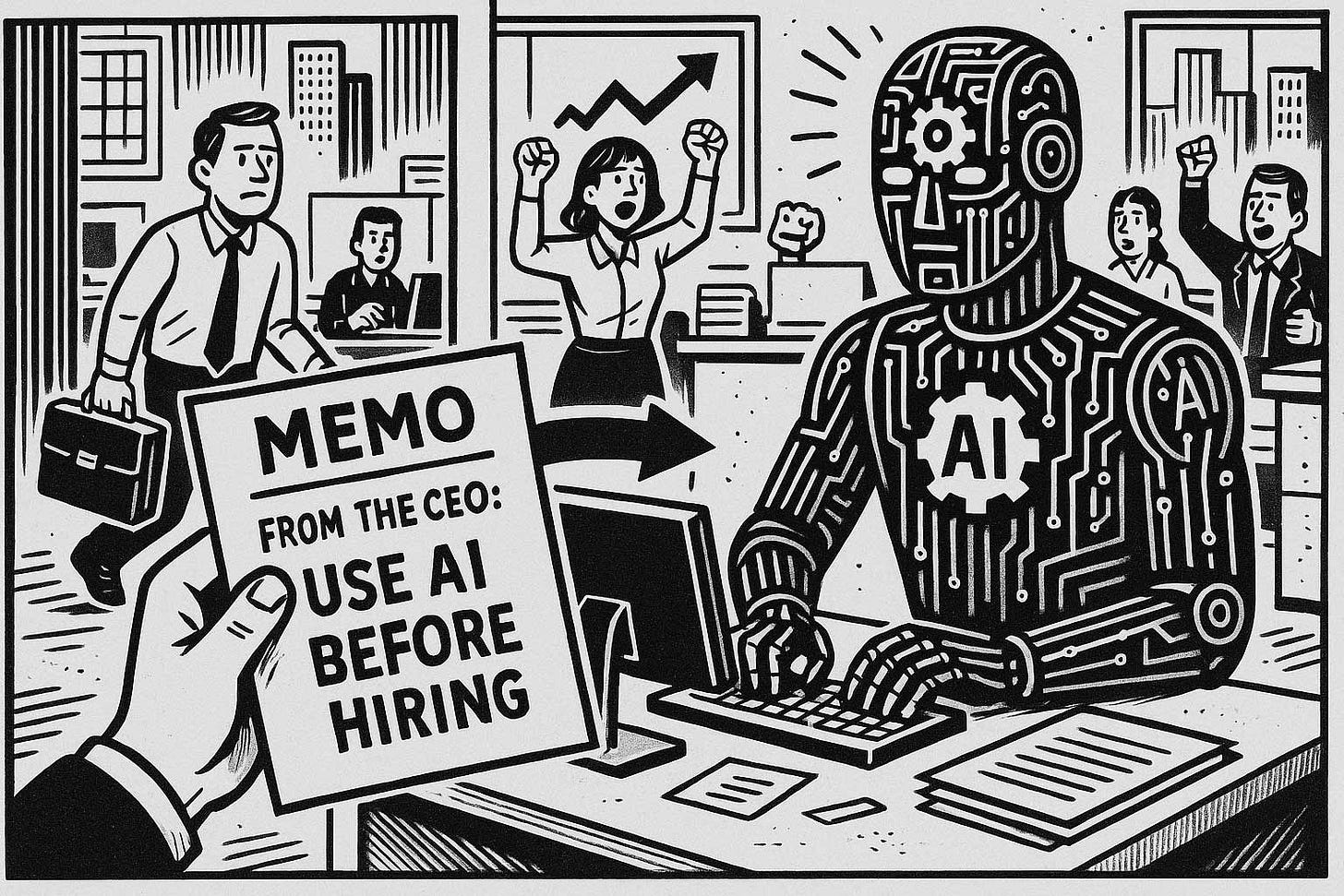

Sent this to my grandson in an MBA program. Thanks 🙏🏻
Yes yes yes. I just wrote about this albeit with a slightly different position as “three dimensional work” factoring in the some of how we work in the past will co-exist with the new ways infused by AI